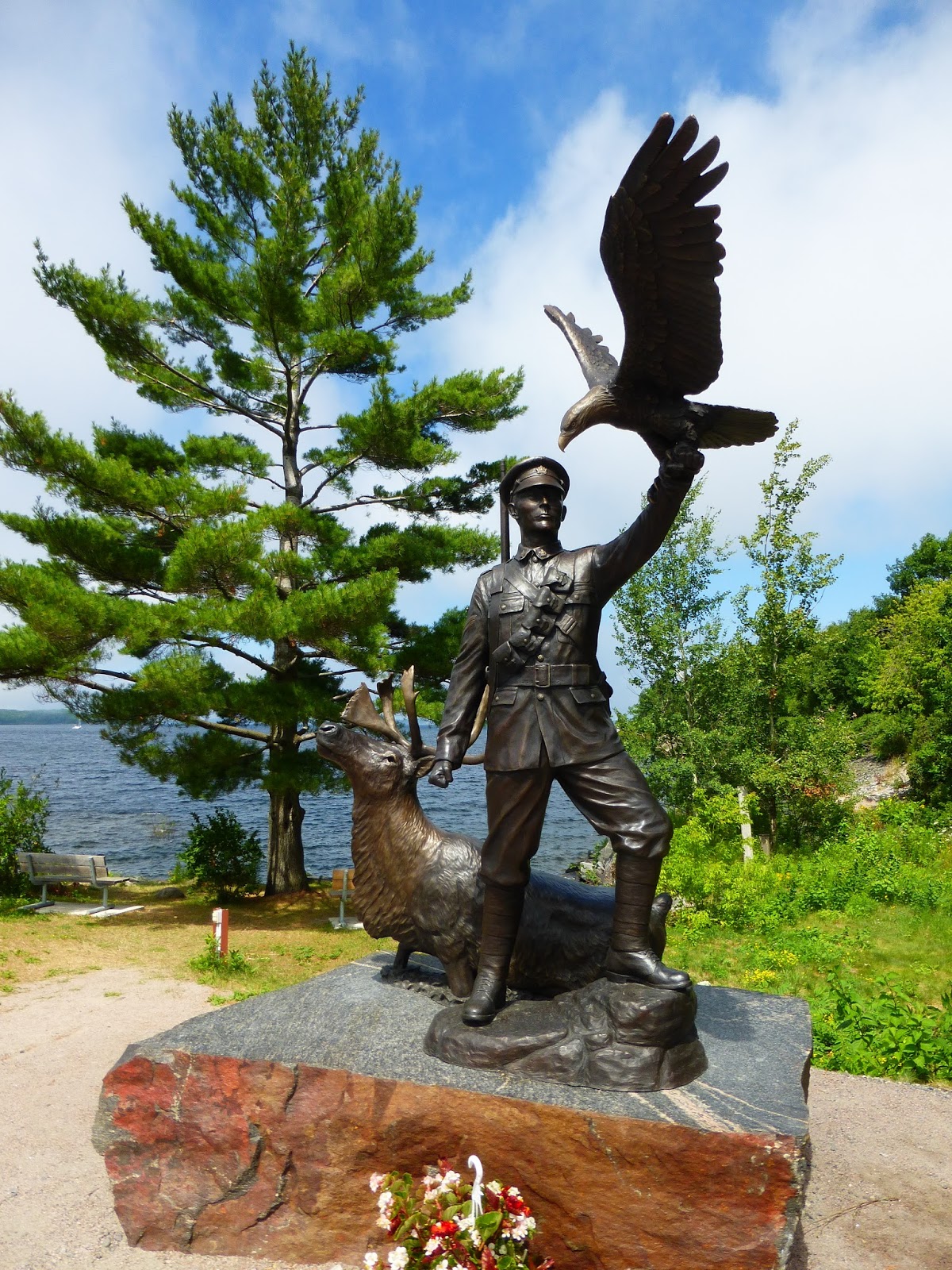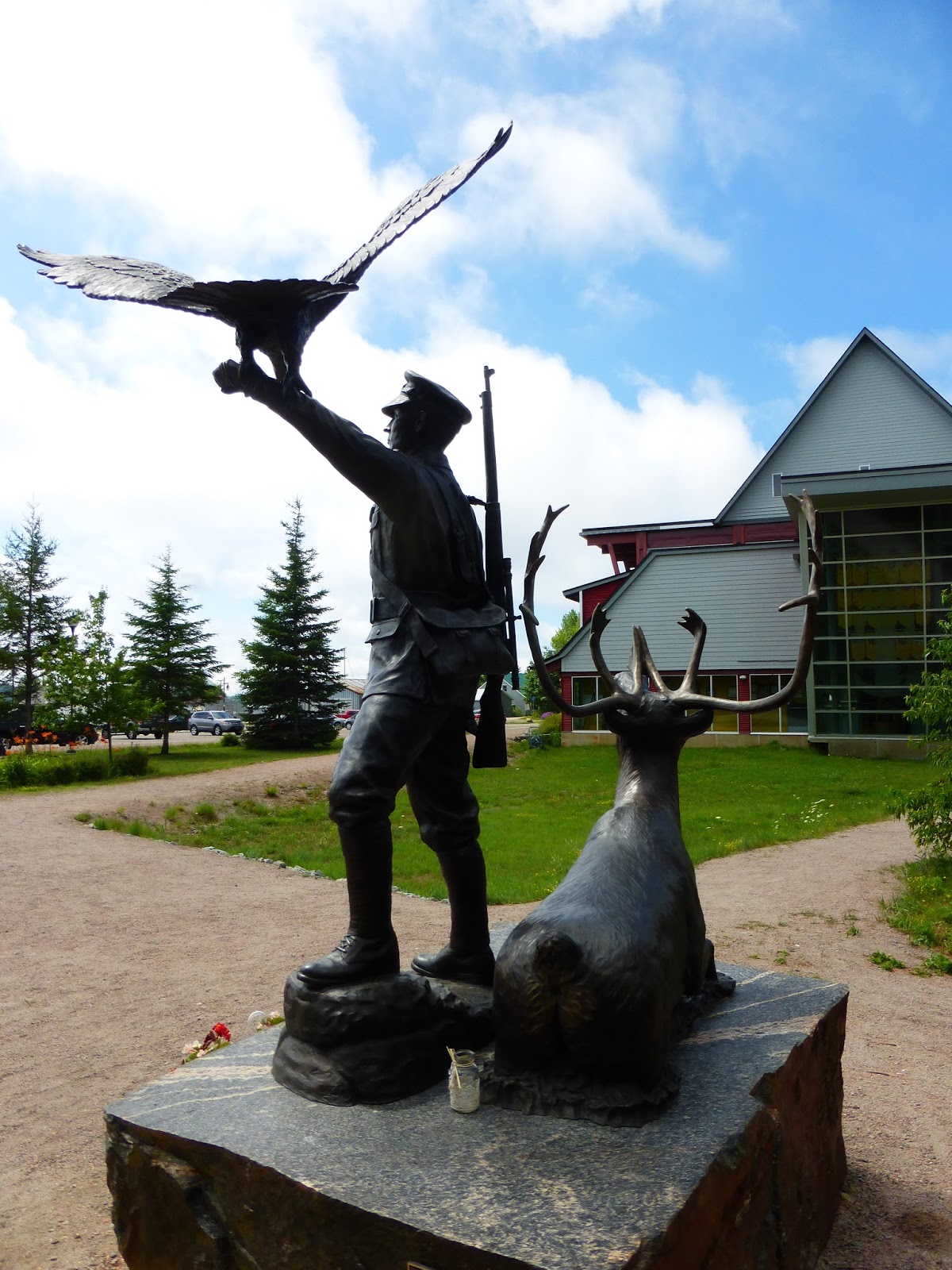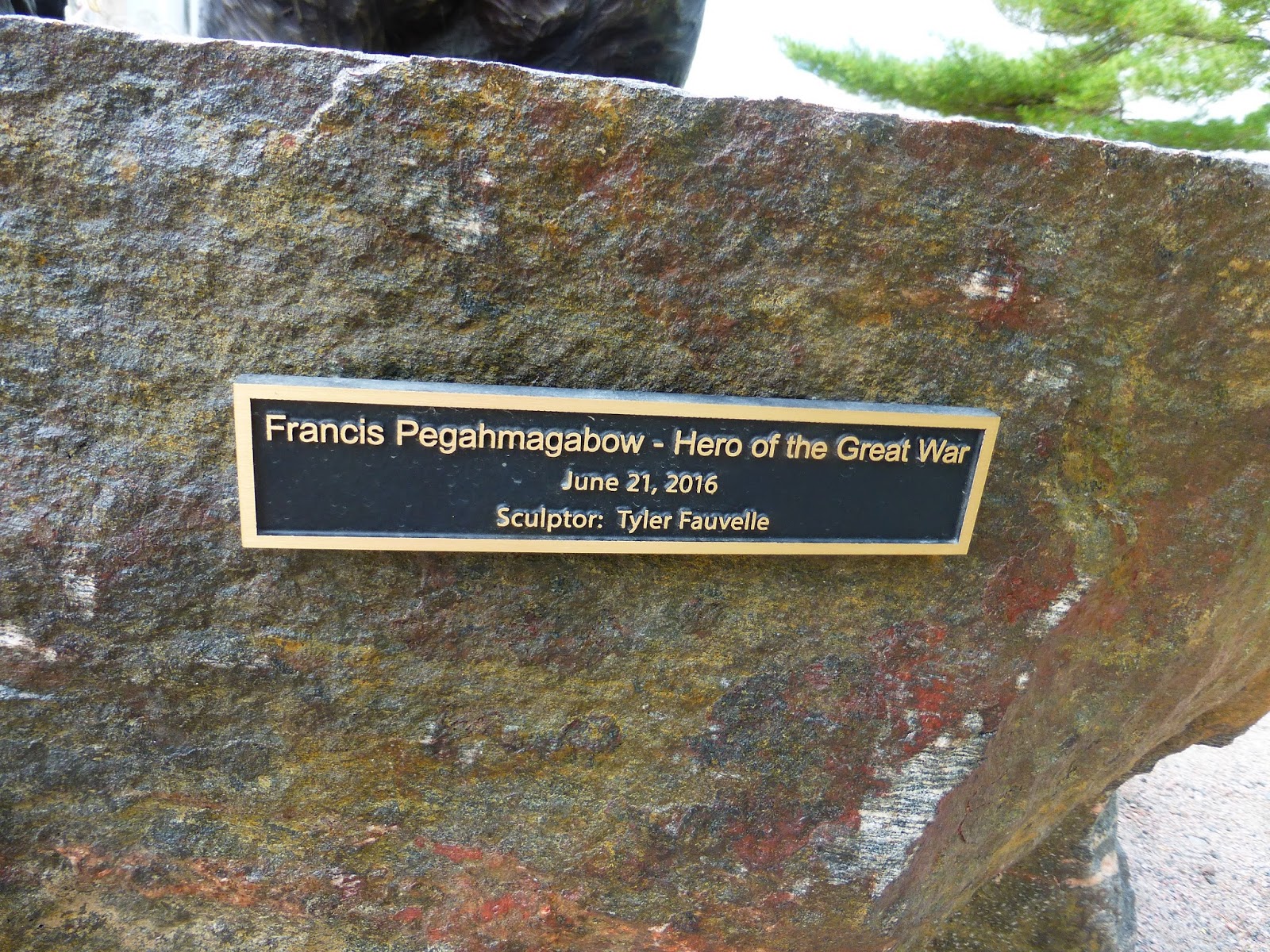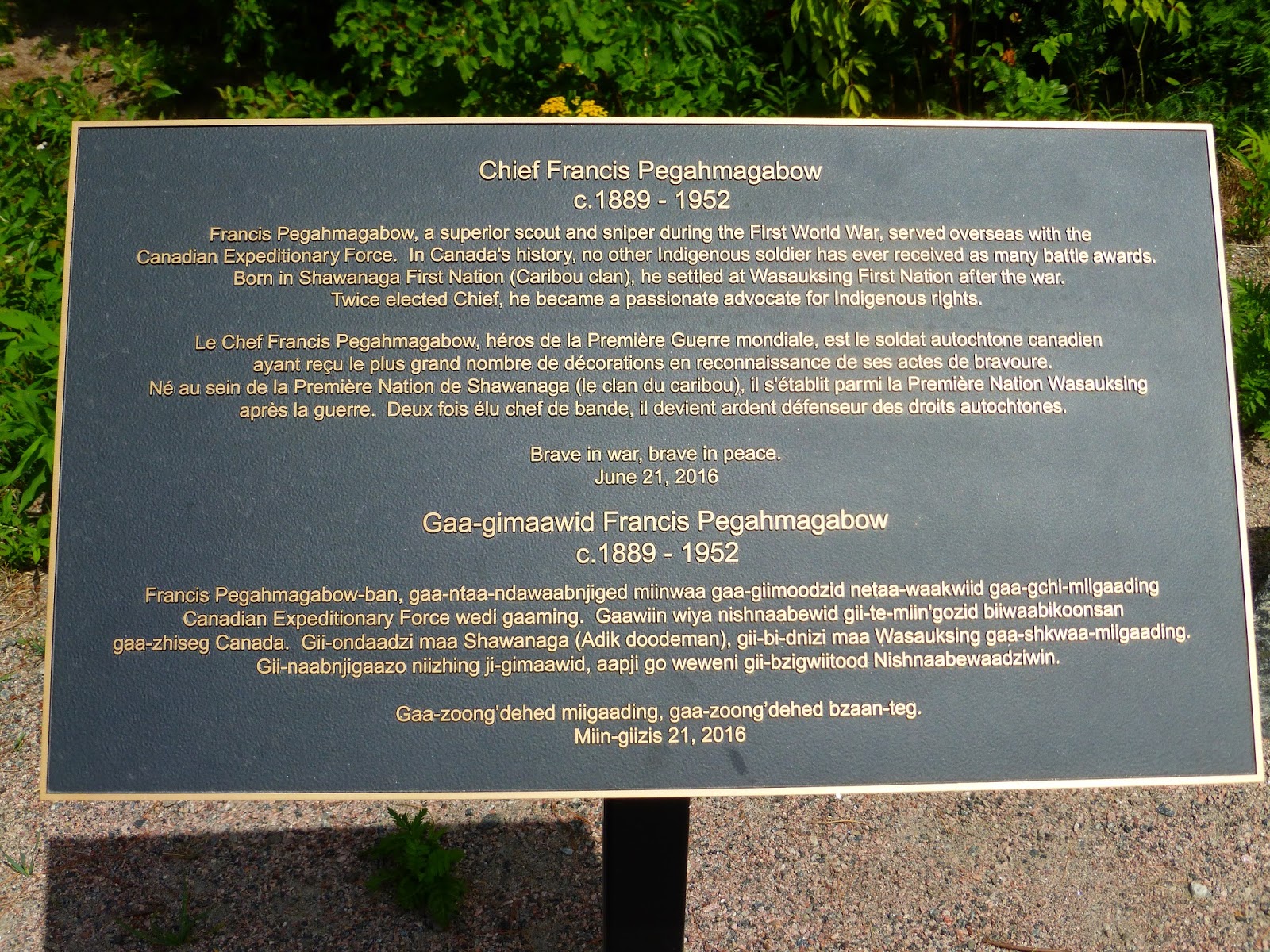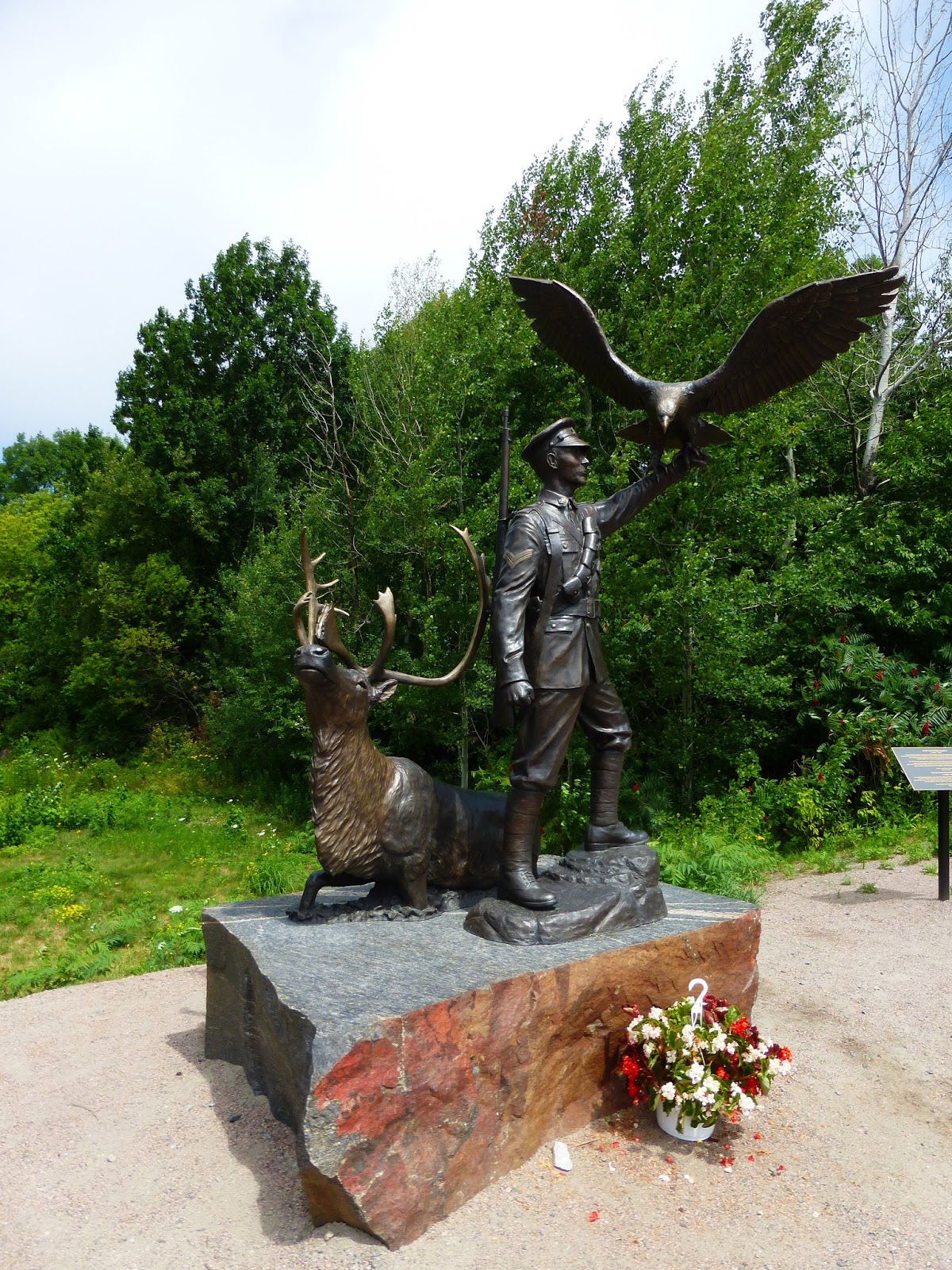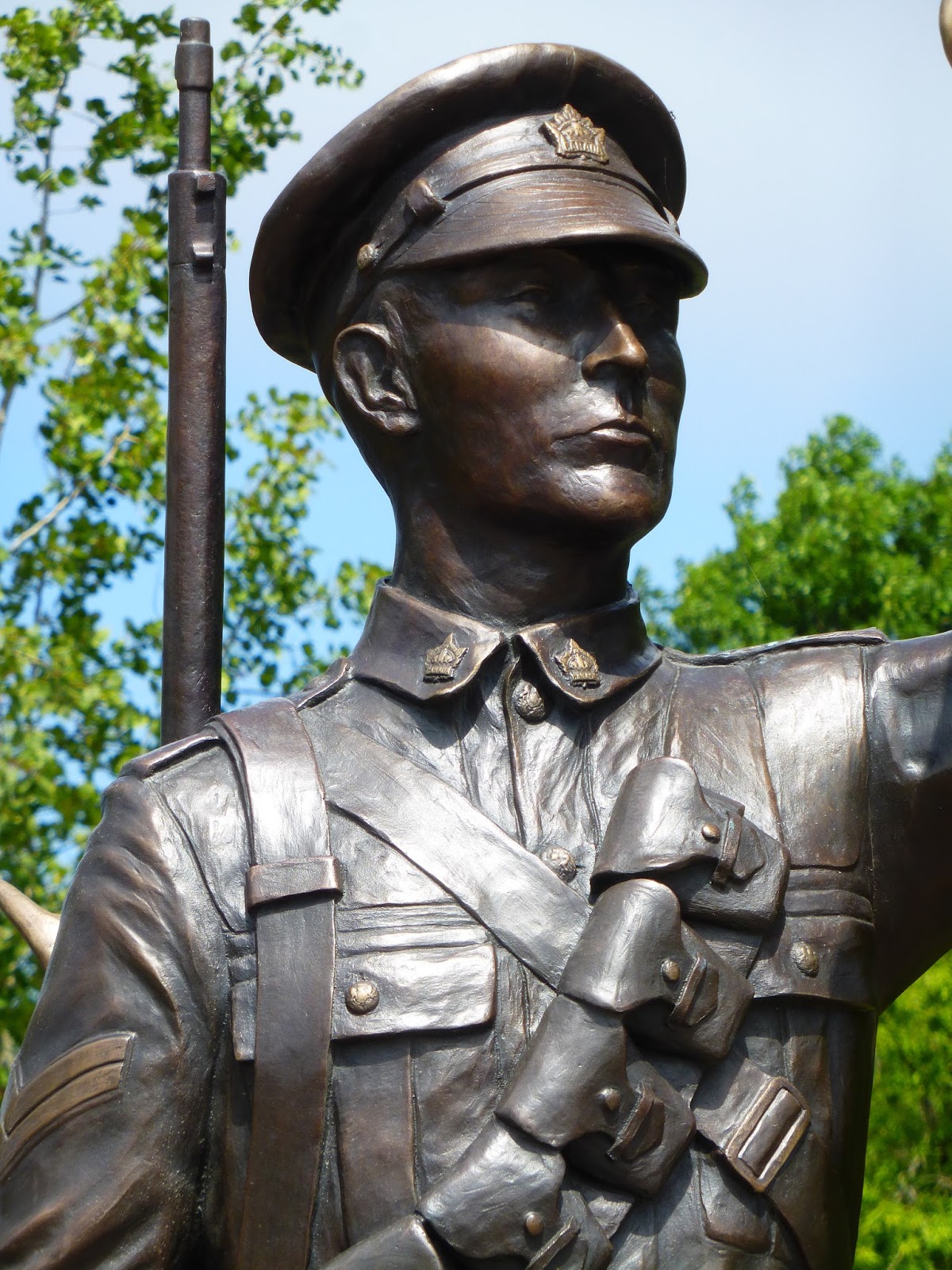A bronze likeness of Sergeant-Major Francis Pegahmagabow was unveiled June 21, 2016, on National Aboriginal Day (today, National Indigenous Peoples Day) in Parry Sound, Ontario. The monument overlooks his home at Wasauksing First Nation, and stands not far from Shawanaga First Nation, where he was born. The event featured significant military representation, including Lieutenant General Marquis Hainse, who was then Commander of the Canadian Army, as well as a 50-soldier honour guard. Chief Perry Bellegarde, then-National Chief of the Assembly of First Nations, was among the honoured guests paying tribute to the great Anishinaabe hero.
The monument was created by Tyler Fauvelle, a professional sculptor based in Sudbury, Ontario. The statue, which stands approximately 10 feet high, depicts Pegahmagabow in his wartime uniform with an eagle above and a caribou at his side. The caribou represents Pegahmagabow's clan, hunting and sustenance; it pushes up through water, a sign of Pegahmagabow’s battle through the depths of war. It symbolizes the spirit of his people crossing the ocean with him, and of their own struggle to emerge from the depths of injustice.
The rock at his feet resembles the far-away Canadian Shield. Even on foreign soil that never knew his ancestors, he was grounded by his home, by the culture written in his heart.
The eagle is the sign of the Thunderbird - the powerful, mystical protector, the first messenger, the prayer carrier. It calls to mind Pegahmagabow’s dangerous role as a scout and messenger, and all the prayers rising up from the battlefield. Migizi was needed as it must have seemed like the end of the world. The eagle’s acute vision represents Pegahmagabow’s – his sharp sniper’s eye, but also his figurative vision, as a man who saw the vital necessity of preserving his people’s language and traditions and of advocating for Indigenous rights. It echoes the eagle feathers in his Chief’s headdress, a reminder of his lineage and that he twice served as Chief of Wasauksing First Nation. The shock of war followed Francis Pegahmagabow home. Thunder, artillery and the Thunderbirds would forever be linked in his mind and spirit.
Francis Pegahmagabow is shown in the Canadian Expeditionary Force uniform he would have worn, with the rifle that his own life and the lives of his fellow soldiers depended on. His pose is noble, uplifted, alluding to his bravery and to his spiritual strength.
A small medicine pouch in his hand; Pegahmagabow said he never knew what was in the pouch he was given by a medicine man. There is no doubt that it was part of the strong sense of spiritual protection that sustained him throughout some of the Great War’s most horrific battles.
The entire concept came to Tyler in a dream. It took months to sculpt, during which he often had the honour of speaking with Francis Pegahmagabow’s family. However, the concept never really changed much from the sculptor’s first dream of the warrior’s monument.
Pegahmagabow is one of the few to have fought in the Great War almost entirely from beginning to end. Revered as the most decorated Indigenous Canadian soldier to fight in the First World War, he is one of only a handful of members of the Canadian Expeditionary Force to have earned the Military Medal (MM) with two bars, the equivalent of receiving the MM three times. The first commendation came during his first year on the Western Front; it recognized his disregard for danger and his faithfulness to duty while carrying critical messages during battle. The second award (first bar) honoured his brave actions keeping in touch with the flanks and guiding relief during the Battle of Passchendaele, where the Canadian Corps joined British Divisions to take and hold the village. The third battle award (second bar) was for his actions during the Battle of the Scarpe (part of the 2nd Battle of Arras), where he charged into heavy machine gun and rifle fire to bring back ammunition for his desperate comrades.
After the war, Pegahmagabow served Wasauksing First Nation as Councilor and as Chief. He continued to lead by example as a member of the Non-Permanent Active Militia (Canadian Army Reserve), and as an early, passionate activist in the national Indigenous rights movement.
Francis Pegahmagabow died in 1952, and is buried in a military-marked grave at Wasauksing First Nation (Parry Island), Ontario. The medals honouring his remarkable achievements are on permanent display at the Canadian War Museum in Ottawa.
The Ontario Native Education Counselling Association (ONECA), a registered charity supporting Indigenous education, commissioned the monument. ONECA raised half of the funds needed, while the remaining half was provided by the Department of Canadian Heritage.
Following the unveiling of the bronze monument commemorating Francis Pegahmagabow:
- The Canadian Armed Forces announced the addition of the historic name 'Northern Pioneers' to the official title of The Algonquin Regiment. This was in tribute to Pegahmagabow, who was among the first to sign on with the 23rd Regiment (Northern Pioneers) overseas contingent in August 1914.
- Sounding Thunder: The Stories of Francis Pegahmagabow, was written by Dr. Brian D. McInnes, an educator and great-grandson of Pegahmagabow. Published in 2016, the book celebrates Francis Pegahmagabow’s extraordinary life and accomplishments.
- Sounding Thunder: The Song of Francis Pegahmagabow was commissioned by the Festival of the Sound in 2018. (Tim Corlis, composer and Armand Garnet Ruffo, librettist.) Created in consultation with Brian D. McInnes and Jodi Contin Baker, the production is a musical journey into the life of Pegahmagabow, drawn from the Great War hero's memoirs.
